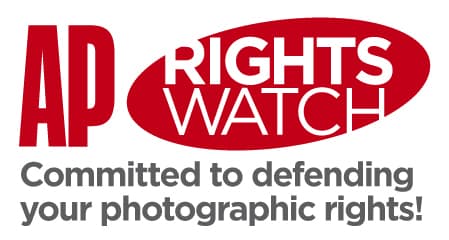Page One: Photographers’ Facebook campaign
The National Trust has changed its rules to allow amateur photography inside its historic properties.
The move followed a campaign for a change in policy led by a group of photographers on the social networking website Facebook.
The Trust had previously placed a complete ban on photography indoors when its properties are ‘open to visitors’.
‘Amateur photography (including filming) without flash is now permitted in historic interiors at the Property Manager’s discretion,’ states the National Trust website.
Among those welcoming the move is Mark Taylor, who set up a Facebook-based campaign group a few months ago. He said: ‘I felt their policy was onerous and I linked to this on the [National Trust] Flickr group.
‘I only gained 55 members, but perhaps it had an effect.’
The National Trust wrote to Mark recently, confirming the move.
John Stachiewicz, publisher and head of the National Trust’s media group, told us that the move was part of a deliberate shift in attitude towards photographers.
But he denied it was a direct response to complaints.
Policy on tripod use
In an interview with Amateur Photographer (AP) this afternoon Stachiewicz admitted that, in the past, the Trust has adopted a ‘rather harsh stance towards amateur photography’.
‘Some of our signage was sending out messages saying “don’t do this, don’t do that”. This was too rigid and prescriptive.’
He said the policy towards amateur photographers stemmed from a long-held, and now outdated, ‘security’ concern that pictures taken by visitors inside National Trust properties could be used to plan a robbery.
‘Arguments like that no longer hold water and are not a reason for not allowing interior photography.’
Asked to clarify the Trust’s policy on using tripods indoors, Stachiewicz told us: ‘The property manager has to make a call. If there is no-one around and a visitor gets a tripod out then that’s not the end of the world.’
He explained that the manager would make a decision based on whether the use of a tripod would ‘interfere’ with other visitors’ enjoyment.
Stachiewicz said a photographer may be asked not to take photos if there was a ‘bottleneck’ of visitors developing at a given property.
Flexible approach
And flash is banned because, he said, it is known to have an effect on the retina of the eye that can be ‘irritating’ for other visitors.
He advised anyone who wants to be certain they will be allowed to take photos to check with the property beforehand.
Stachiewicz insisted that photos taken on ‘impulse’ should not be a problem and the Trust does not want to be seen as ‘heavy-handed’.
However, he added: ‘It’s always best to ask.’
The Trust’s updated rules add that, as with outdoor photography, the photographer needs permission from the Trust if the pictures are for commercial use.
Read all our NATIONAL TRUST related stories here
PAGE TWO: NATIONAL TRUST TO SHIFT POLICY TOWARDS ‘PROFESSIONALS’
And the National Trust warns that ‘visitors must be aware that at some places, there may be copyright issues, and further permissions may be required in respect of collections not owned by us. In these situations the Property Manager decision as to if photography is allowed is final’.
? In a separate development Stachiewicz revealed that the Trust is also seeking to alter its policy towards professional photographers planning to capture commercial pictures at its properties.
‘It is something we are looking at – where we can work with professional photographers, rather than being in conflict with them,’ he told AP.
He explained that the organisation would benefit from wider media coverage of the National Trust brand that may stem from more pictures of its properties appearing in the press.
However, he admitted there is still a ‘lot to thrash out’ in future meetings with photographers.







